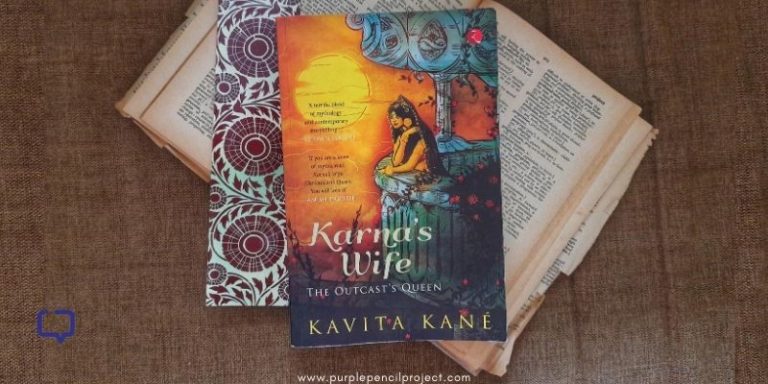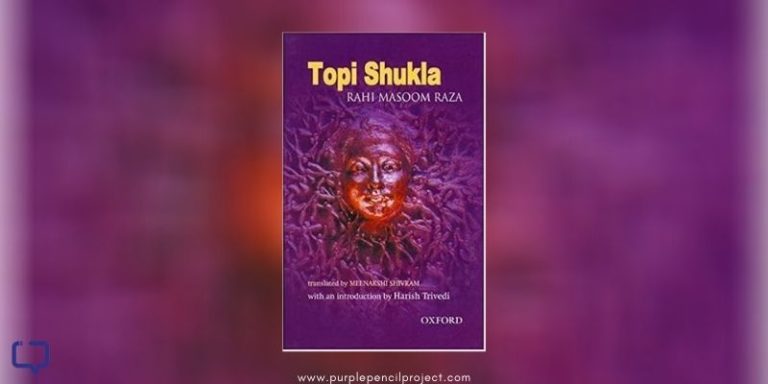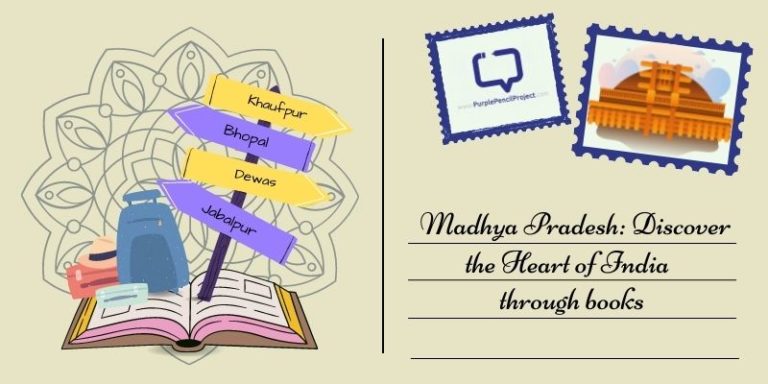Anshika Jain reviews Shakuni & The Dice of Doom by Mallar Chatterjee (published by Readomania, 2019).
Har koi kahin na kahin naach hi raha hai, Sachiv Ji.
This 21st-century Panchayat dialogue perfectly sums up the ancient Mahabharat in a way. Every character did what they did because it felt the right and just action for them, fulfilment of their dharma. Mallar Chatterjee’s book adds to the multiple perspectives needed on the glorious, vast epic that claims, “What is here can be found elsewhere. But what is not here cannot be found elsewhere.” (Debroy, 2015)
What is this Mahabharata Retelling about?
Shakuni and The Dice of Doom begins with the author’s note stating:
This story leans against a philosophy that human evil is probably begotten more by exogenous inducements than innate defects. Perhaps human turpitude is all about wrong, inappropriate reactions or responses.
Recommended Reading: The Kaunteyas: Queen Kunti’s Mahabharata
It fits well because who was thinking that maybe Shakuni had a bad past that made him the evil mama he is now primarily known as? He is considered the incarnation of the Dwapar Yug, the time cycle where a half-and-half situation for dharma and adharma exists. Then how can we not delve deeply into the dharmic actions of Shakuni?
What could’ve been his thoughts on his dear sister Gandhari, whom he endearingly called Panna because of her emerald coloured-eyes, being married off to a blind king, Dhritarashtra? What went on his mind when the results of the game of dice were announced? Why did he forsake the throne of Gandhara and shift to Hastinapur? Were there hidden motives to his instrumental vengeful play in the “bheesham yuddham”? Was his hate for the Kuru clan or the Vrishni Yadavas? Was he really the master of dice or the dice’s master was someone else?

Chatterjee also focuses on other often sidelined or forgotten characters and their arcs. Arshi, Shakuni’s wife, and her reaction to her husband accompanying his sister to Hastinapur. The functioning of the Gandhara kingdom after the crown prince left the state. Vyasa and his feelings about being used (technically) for niyog with Ambika and Ambalika by his mother Satyavati. Devavrata Bheeshma and his animosity towards Satyavati. Was he really loyal to the Kuru kingdom? Vidur and his equation with Vyasa, who was his father. The generation of King Shantanu itself. Were the roots of the Kuru family rotten from the beginning itself? Was Vyasa the chronicler of this story or a pawn in this game of chess?
Recommended Reading: Madhavi Mahadevan’s The Forgotten Wife
The New in Shakuni
Most Mahabharata renditions have focused on the final generation of the Kuru family, the Kauravas and the Pandavas and Draupadi and the game of dice. Although the title of this book also obviously alludes to the infamous die-throw, Mallar Chatterjee brings in the family from King Shantanu’s time, which does not appear in popular culture. The existence of familial unrest between brothers over the throne of Hastinapur started when Shantanu was declared king instead of his elder brother Devapi.
From that viewpoint, the inability of humans to just be happy for their family members without any gains and attaining power becomes disturbingly clear. Satyavati as a character, who she was, and how her entry into the Kuru family affected the “history” remained an undiscovered trajectory that this book tries to address. However, with nearly no dialogue given to her, the narrative also perhaps aligns with how these epics are constructed to silence the female voice.
Shakuni, not being reduced to his disability and cunningness, was refreshing to read here. His overthinking about his “awful” actions, some of which he did not think the consequences through, often makes you think that maybe he was just a teenage boy who was wronged once, and that angst turned into chaotic anger.
Recommended Reading: The Kaunteyas: Queen Kunti’s Mahabharata
Favourite Quote from Shakuni & The Dice of Doom by Mallar Chatterjee
Do you know what went in my favour? It was the fact that you all found your own hate lines. You, Bahlik, Vyasa, Shakuni, Vidur, Dhritarashtra, Gandhari, Kunti, Duryodhana and his brothers, the Pandavas, Draupadi… all. My poison was already coursing through all of your minds.
Conclusion
The writing in Shakuni & The Dice of Doom is sharp and does not feel too droned on because Mallar Chatterjee spends little time recounting the essential episodes of the epic that are inscribed in a reader’s mind through culture. Instead, the straight jump into the characters’ psyche happens, making it a fascinating read. It also reads like a mystery novel, in which you are desperately trying to figure out who the puppeteer of this drama is. No preachy dialogues, just vivid thoughts these characters could have had, taking away their otherworldliness for just a bit.
Have you read this book about the untold stories and hidden motives behind one of the Mahabharata’s most enigmatic characters? We’d love to know your thoughts in the comments below!























One Response
A well-written convincing review. Definitely makes me want to read the book asap!